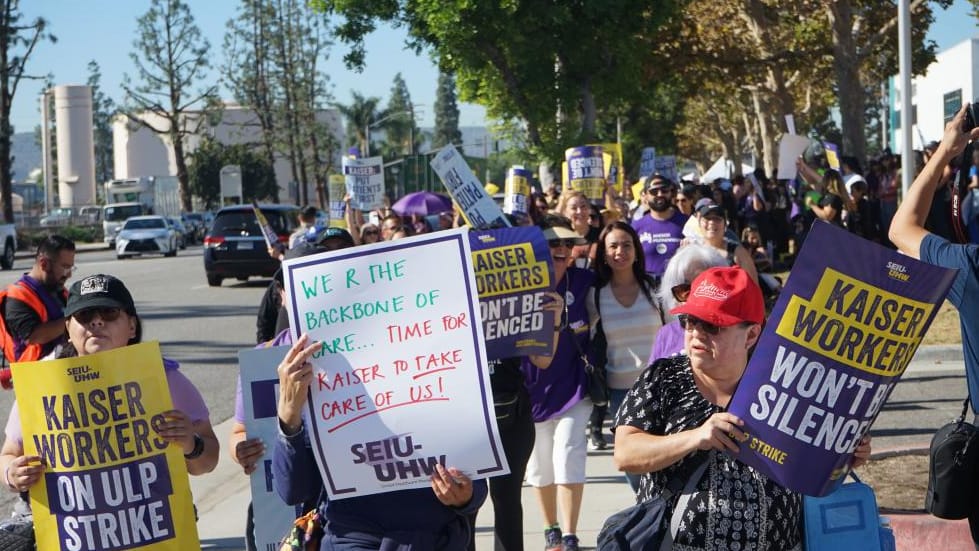In a monumental show of unity and determination, more than 75,000 healthcare workers, including nurses, technicians, and pharmacists, embarked on a historic strike, calling for fair wages and improved working conditions. The strike, which began on Wednesday, has been organized by the Coalition of Kaiser Permanente Unions, representing employees of the leading nonprofit health provider in the United States. With signs held high and handbells ringing, these workers are making their voices heard in what has become the largest healthcare worker strike in U.S. history.
Kaiser Permanente Employees Walk Off the Job in Six States
The strike action has disrupted operations at Kaiser Permanente facilities across six states, including California, Colorado, Washington, Virginia, Oregon, and Washington, D.C. California, the home state of Kaiser, is the hardest hit, with more than 68,000 workers participating in the strike. Employees and their families gathered outside Kaiser facilities in Sacramento, Los Angeles, and Irvine, displaying signs that read “Kaiser workers won’t be silenced” and “Respect and value healthcare workers.”
Healthcare Workers Demand Higher Wages and Improved Staffing Levels
The primary demands of the striking healthcare workers revolve around fair compensation and addressing the ongoing staffing crisis. Union leaders are seeking across-the-board pay increases of 6.5 percent in the first two years and 5.75 percent in the subsequent two years, while Kaiser has offered only 3 percent for each year. Additionally, the workers are calling for long-term investments to alleviate the staffing shortage, which they argue has led to “unsafe working conditions and deteriorating care for patients.”
Videos shared on the Coalition of Kaiser Permanente Unions’ website highlight the grievances of frontline healthcare workers, who describe being overworked and burnt out due to inadequate staffing. Those earning less than $25 an hour reveal their struggle to make ends meet, especially in the face of rising inflation. The union coalition has also criticized Kaiser for its alleged “bad faith” bargaining, despite the organization reporting over $3 billion in profits in the first half of the year.
Impact on Patient Care and Ongoing Negotiations
The three-day strike is expected to have consequences on patient care, with potential delays in medical appointments, lab results, and prescriptions. Non-urgent procedures may be postponed, and some clinic hours might be reduced, according to warnings from Kaiser. However, the healthcare provider has assured that hospitals and emergency departments will remain open during the strike, staffed by non-union “contingency workers,” including doctors and managers.
Kaiser has acknowledged the challenges faced by healthcare workers, emphasizing that over 5 million people have left their healthcare jobs, contributing to record-high burnout rates in the United States. Negotiations between the unions and Kaiser are ongoing, with both sides expressing their commitment to reaching a fair and equitable agreement.
This strike is part of a broader trend of increased labor activity in the United States this year. More than 300,000 workers have been involved in work stoppages through August, as per data from the U.S. Bureau of Labor Statistics. Various industries, including automobiles and entertainment, have witnessed large-scale strikes, reflecting growing concerns among workers about wages, staffing, and working conditions. As healthcare workers continue to make their demands heard, the outcome of this historic strike could have far-reaching implications for the future of labor relations in the healthcare industry and beyond.
















